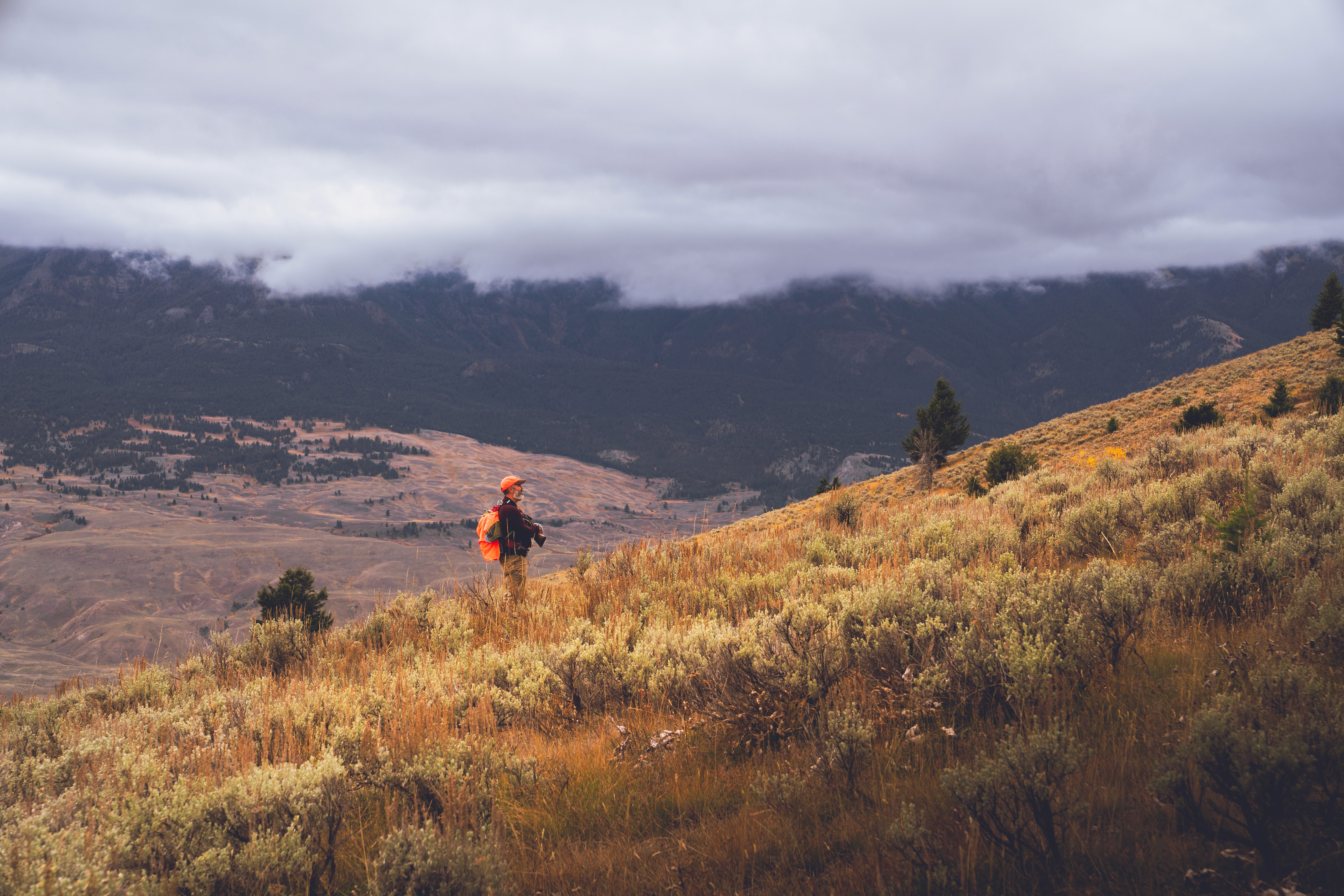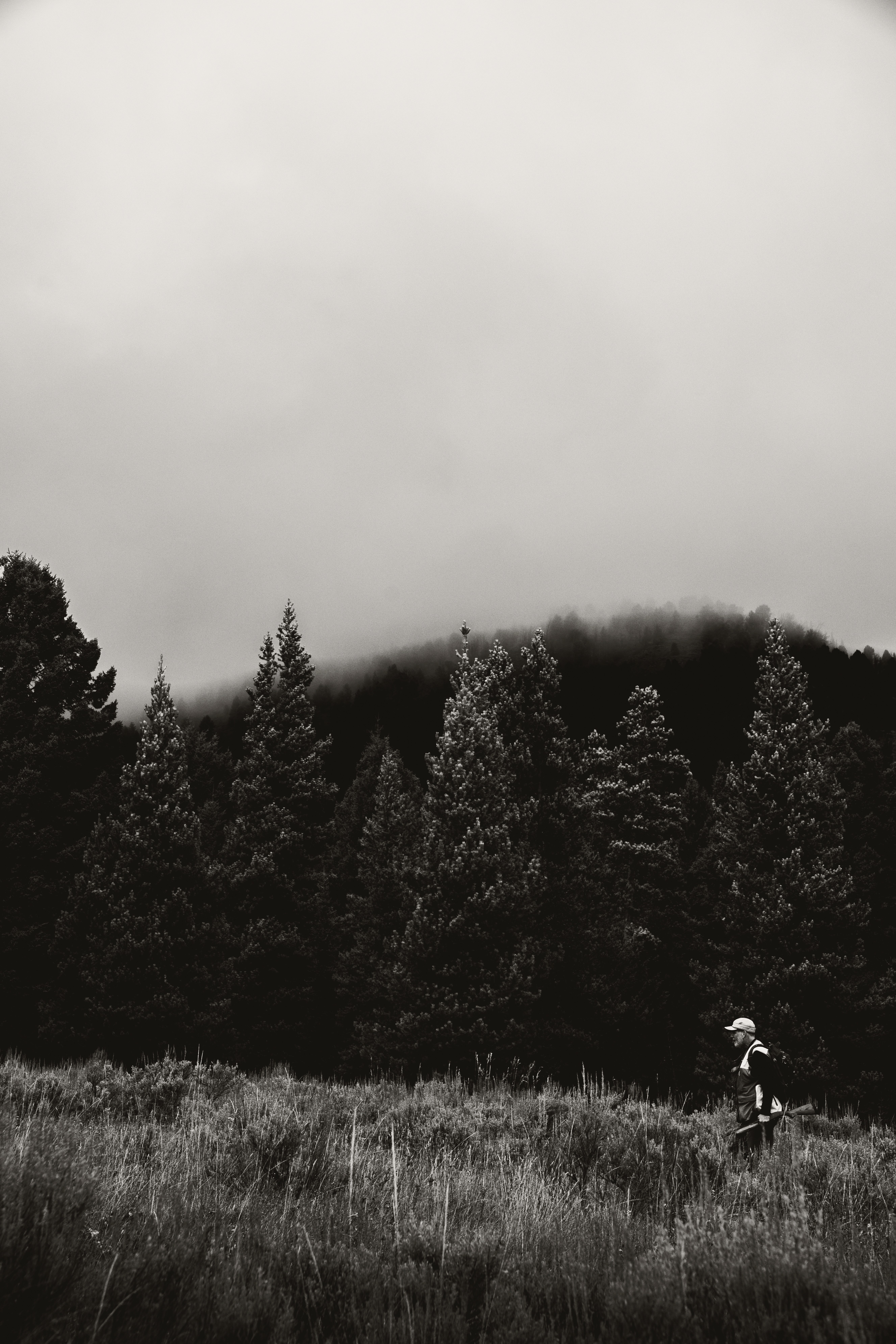



PackMule
What to do When You're Wrecked After a Hunt
“What’s the best course of action next week to recover? Man, I’m wrecked but I want to keep up and get after it. Getting 4 moose and 2 rafts and gear off the river and to the pickup point on a lake was brutal. Probably the hardest thing I’ve done.”
I got this text from a Backcountry Ready member over the weekend. Sounds like a hell of a trip, eh? Four guys killed four bull moose. It’s the hunt of a lifetime. But as you read, it also kicked his ass. And you can’t take that kind of ass-kicking lightly.
However, he doesn’t want to rest on his hind end and lick his wounds. The man wants to move. And good on him, movement is the best medicine for healing after a brutal hunt.
But the key is to do the right movement to recover after a brutal hunt.
Last week, we talked about what to do after a hunt. The article lays out general guidelines for how to train after a hunting trip that lasts a week or more. It’s a great start. This week we’ll dive deeper on what to do if your hunt really puts the boots to you. If you want the science on what I’m about to tell you to do, brush up on last week’s article. This week we’re jumping in with action.
Wrecked After a Hunt? Follow Do This Stuff
Here are seven simple tactics you can use to recover when you’re wrecked after a hunt.
Move, Even if You Don’t Feel Like it
Sometimes when you’re stiff, sore, tired, and beat to absolute hell, the last thing you want to do is work out. Well, typically we don’t take a hard-o stance on anything. But in this case, I’m hitting you with tough love. Too bad, you need to move!
Movement increases blood flow, which takes nutrients to your recovering tissues. Your parasympathetic nervous system, the part of your autonomic nervous system that helps you “rest and digest,” activates after light movement. Restoring parasympathetic tone is huge for recovery. Just sitting around doing nothing won’t do that for you. So, don’t plan to sit on your keister and watch re-runs of Home Improvement. Make a plan to move.
We’ll talk about what that plan should include in the next sections.
Do Rebound Workouts
We borrowed rebound workouts from performance coach Joel Jamieson. These are simple, short workouts designed to do what I mentioned in the previous section – increase blood flow and restore parasympathetic tone. They work.
Here’s the structure:
5-10 minutes of breathing exercises and mobility work
15-20 minutes of low-intensity cardio
1-2 light, low-volume strength exercises
Breathing cool down and soft tissue work (foam rolling)
Hit this workout the week after a brutal hunt on days when you’d normally strength train. Two to three of these could bring you right around.
But that’s not all you could, or should, do to recover. Let’s keep going.
Walk, A Lot
To move some blood, all you have to do is move your legs. Get up and go for a walk first thing in the morning. Take a walk on your lunch break. Walk in the evening after dinner. Just walk. Again, we need blood to move and we need to restore parasympathetic tone. Walking does that for you without any risk of giving your body too much stress. Get in as many 10- to 30-minute walks as you can throughout the week.
Zones 1 and 2 Conditioning
Hit a few 30-minute sessions of Zone 1 or 2 conditioning. The sessions should be short because we don’t want to steal recovery resources from the body. We just want enough time to meet our goals of moving blood and restoring nervous system tone. A couple of these workouts throughout the week would be grand.
Manual Therapy (If You Have Access)
If you can, and want to, go get yourself a gaht dang massage. Manual therapy is a great way to drive recovery because human touch has a dramatic effect on the nervous system, and it also brings blood to tissues.
Foam Rolling and Other Soft-tissue Care
Foam rolling doesn’t break up adhesions or any other such nonsense that’s been claimed over the years. But it does do the two things we’ve talked about throughout this entire article – moves blood, and restores nervous system tone.
It’s included in the rebound workouts, but even if you choose not to do a rebound workout, it’d be a good idea to do some foam rolling or some other kind of soft-tissue care along with some mobility work.
You could do this while you’re watching TV, before you take a walk, or before and after a Zone 1 or Zone 2 session. Take 5-10 minutes and roll out different muscles then do mobility exercises that incorporate those muscles. You’ll be amazed at how good you feel afterward.
CCS Workouts
I mentioned CCS workouts in last week’s article. CCS stands for Capacity, Carry, and Strength. These workouts blend movement capacity (mobility) training, carries, and light strength training into one, feel-good workout. Now, these are more intense than the rebound workouts, so, if you’re in the shitter, save these workouts for the end of the week after you’ve done a rebound workout or two.
You could also do light versions of the CCS workouts instead of the rebound workouts. They can serve the same function, so it comes down to preference.
For a refresher on CCS workouts, click here and read last week’s article.
A Sample Recovery Week
Here’s an example of how to lay out the tactics from the previous section to create a productive, post-hunt recovery week:
Monday: Rebound workout + Lots o’ walking
Tuesday: Lots o’ walking + Lots o’ walking
Wednesday: Rebound workout or CCS workout + Lots o’ walking
Thursday: 30-minute Zone 1 or Zone 2 session + Lots o’ walking
Friday: Rebound or CCS workout + Lots o’ walking
Blood and Nerves
Remember, your post-brutal hunt recovery week has only two goals: increase blood flow to get nutrients to recovering tissues and restore parasympathetic tone. That’s it and that’s all. Use the simple recovery tactics and focus on feeling good. Do that, and you’ll be back in the game and training hard in a week or so.
(Want help devising your post-hunt plan? Shoot us an email at humanpredatorpackmule@gmail.com and we'll schedule a call.)
Recent posts
Related Articles

Mountain Hunting
Dec 10, 2025
The Toughest Hunt on Earth: Himalayan Blue Sheep Expedition
“It’s truly an expedition. I’d even say it’s the purest hunt on earth.” This wasn’t the first time Trey Sperring and I had talked about hunting blue sheep in Nepal. It wasn’t even the second. The first was during our mutual friend and client, John Mark Prewitt’s, California Big Horn hunt in November 2024. Since then, we’ve texted about it, mentioned it on phone calls, and even discussed it during episode 74 of the Packmule Podcast. It is a conversational thread running through our friendship.

Mountain Hunting
Dec 10, 2025
The Toughest Hunt on Earth: Himalayan Blue Sheep Expedition
“It’s truly an expedition. I’d even say it’s the purest hunt on earth.” This wasn’t the first time Trey Sperring and I had talked about hunting blue sheep in Nepal. It wasn’t even the second. The first was during our mutual friend and client, John Mark Prewitt’s, California Big Horn hunt in November 2024. Since then, we’ve texted about it, mentioned it on phone calls, and even discussed it during episode 74 of the Packmule Podcast. It is a conversational thread running through our friendship.

Mountain Hunting
Dec 10, 2025
The Toughest Hunt on Earth: Himalayan Blue Sheep Expedition
“It’s truly an expedition. I’d even say it’s the purest hunt on earth.” This wasn’t the first time Trey Sperring and I had talked about hunting blue sheep in Nepal. It wasn’t even the second. The first was during our mutual friend and client, John Mark Prewitt’s, California Big Horn hunt in November 2024. Since then, we’ve texted about it, mentioned it on phone calls, and even discussed it during episode 74 of the Packmule Podcast. It is a conversational thread running through our friendship.

Mindset & Motivation
Dec 7, 2025
Review, Recalibrate, Re-Launch: Build Your Hunting Fitness Plan for 2026
Most folks aren’t good at reflecting. Holding the mirror up to yourself and to what’s happened in the recent past is hard work — and it can be damn uncomfortable. But it’s necessary for growth and progress. If you read those first few sentences and thought, “Hell, that’s me.” And you also had the thought that you would like to get better at moving yourself forward, just know that it makes sense that you aren’t great at reflecting. You likely weren’t ever taught how to do it, or if you were, you weren’t given a good system for taking what you’ve learned and molding it into a productive plan for moving yourself forward.

Mindset & Motivation
Dec 7, 2025
Review, Recalibrate, Re-Launch: Build Your Hunting Fitness Plan for 2026
Most folks aren’t good at reflecting. Holding the mirror up to yourself and to what’s happened in the recent past is hard work — and it can be damn uncomfortable. But it’s necessary for growth and progress. If you read those first few sentences and thought, “Hell, that’s me.” And you also had the thought that you would like to get better at moving yourself forward, just know that it makes sense that you aren’t great at reflecting. You likely weren’t ever taught how to do it, or if you were, you weren’t given a good system for taking what you’ve learned and molding it into a productive plan for moving yourself forward.

Mindset & Motivation
Dec 7, 2025
Review, Recalibrate, Re-Launch: Build Your Hunting Fitness Plan for 2026
Most folks aren’t good at reflecting. Holding the mirror up to yourself and to what’s happened in the recent past is hard work — and it can be damn uncomfortable. But it’s necessary for growth and progress. If you read those first few sentences and thought, “Hell, that’s me.” And you also had the thought that you would like to get better at moving yourself forward, just know that it makes sense that you aren’t great at reflecting. You likely weren’t ever taught how to do it, or if you were, you weren’t given a good system for taking what you’ve learned and molding it into a productive plan for moving yourself forward.

Mindset & Motivation
Dec 6, 2025
Floors and Ceilings: Practical Actions and Lofty Goals
As we wind down one year to begin another, we frequently ask clients, friends and ourselves what we want out of the coming year. An answer I frequently hear is “I just want to maintain”. My standard answer is, “Maintain what?”. Common answers include things like strength and body weight. Despite my desire to take a big bounce and fly right off that diving board, I usually reign in my own tendencies and encourage people to get a clearer picture of a few things, including what they consider the acceptable floor as well as their loftiest goals.

Mindset & Motivation
Dec 6, 2025
Floors and Ceilings: Practical Actions and Lofty Goals
As we wind down one year to begin another, we frequently ask clients, friends and ourselves what we want out of the coming year. An answer I frequently hear is “I just want to maintain”. My standard answer is, “Maintain what?”. Common answers include things like strength and body weight. Despite my desire to take a big bounce and fly right off that diving board, I usually reign in my own tendencies and encourage people to get a clearer picture of a few things, including what they consider the acceptable floor as well as their loftiest goals.

Mindset & Motivation
Dec 6, 2025
Floors and Ceilings: Practical Actions and Lofty Goals
As we wind down one year to begin another, we frequently ask clients, friends and ourselves what we want out of the coming year. An answer I frequently hear is “I just want to maintain”. My standard answer is, “Maintain what?”. Common answers include things like strength and body weight. Despite my desire to take a big bounce and fly right off that diving board, I usually reign in my own tendencies and encourage people to get a clearer picture of a few things, including what they consider the acceptable floor as well as their loftiest goals.

Mountain Hunting
Dec 10, 2025
The Toughest Hunt on Earth: Himalayan Blue Sheep Expedition
“It’s truly an expedition. I’d even say it’s the purest hunt on earth.” This wasn’t the first time Trey Sperring and I had talked about hunting blue sheep in Nepal. It wasn’t even the second. The first was during our mutual friend and client, John Mark Prewitt’s, California Big Horn hunt in November 2024. Since then, we’ve texted about it, mentioned it on phone calls, and even discussed it during episode 74 of the Packmule Podcast. It is a conversational thread running through our friendship.

Mindset & Motivation
Dec 7, 2025
Review, Recalibrate, Re-Launch: Build Your Hunting Fitness Plan for 2026
Most folks aren’t good at reflecting. Holding the mirror up to yourself and to what’s happened in the recent past is hard work — and it can be damn uncomfortable. But it’s necessary for growth and progress. If you read those first few sentences and thought, “Hell, that’s me.” And you also had the thought that you would like to get better at moving yourself forward, just know that it makes sense that you aren’t great at reflecting. You likely weren’t ever taught how to do it, or if you were, you weren’t given a good system for taking what you’ve learned and molding it into a productive plan for moving yourself forward.


